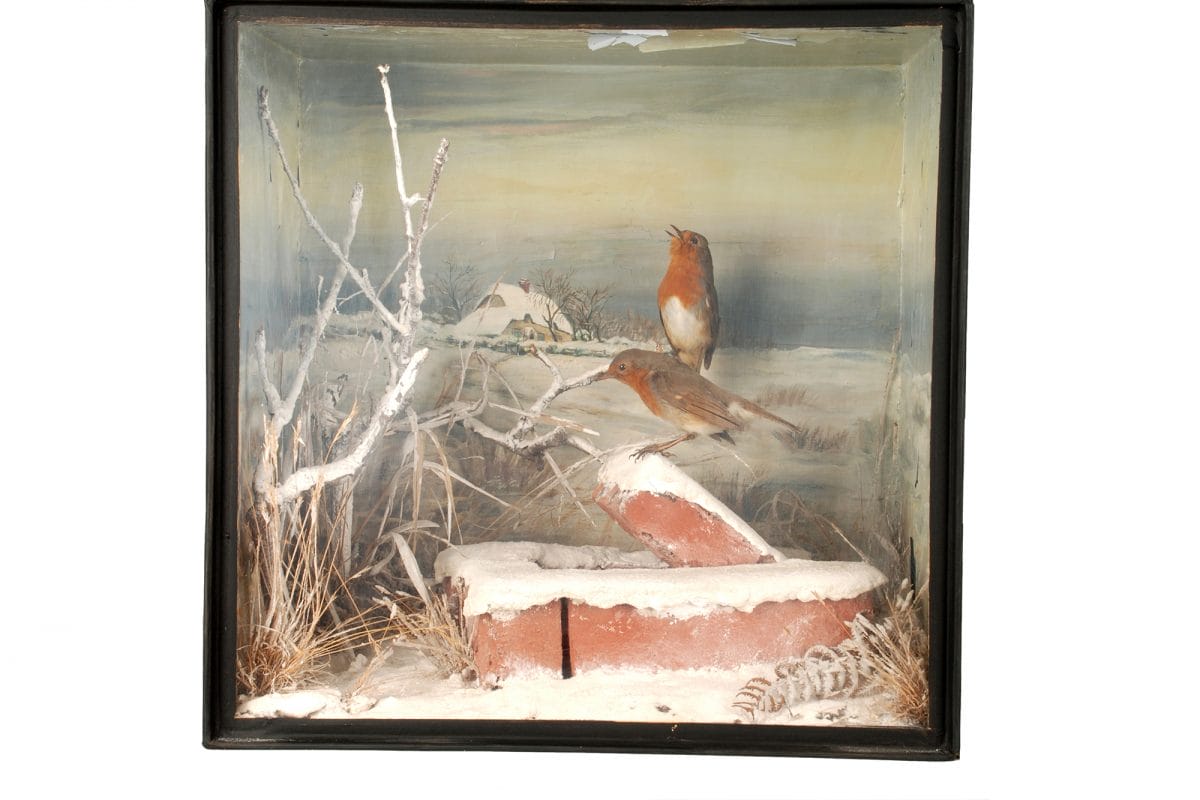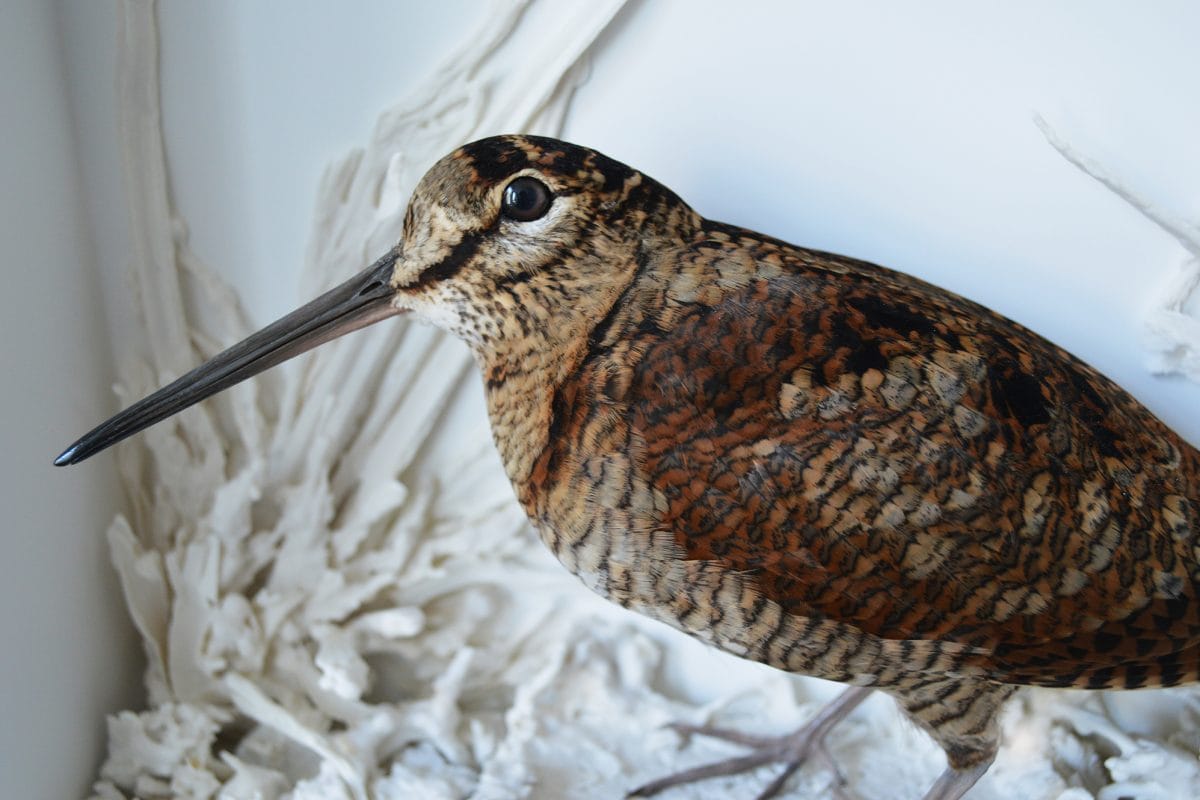
Your display takes its inspiration from the Horniman collection. What made you want to mirror a historic collection in this way?
The pieces I have chosen from the Horniman’s collection all have their own eccentricities, even though they are not the most beautiful and striking works that I could have picked. I wanted to show some of the objects from the collection that would not necessarily have the chance to be put on public display as others within the collection do outshine them. I wanted to show that each piece of taxidermy has a history and charm that should be appreciated.
By creating replicas of the works, I wanted to focus attention on the details of the objects, from the decisions made by the taxidermists, to the labels added over time by museums.
Through the use of white cases and delicate porcelain, I have created ghostly monuments of the originals. Silhouetting my own specimens to commemorate their beauty and fragility in life and now as objects representing their species.
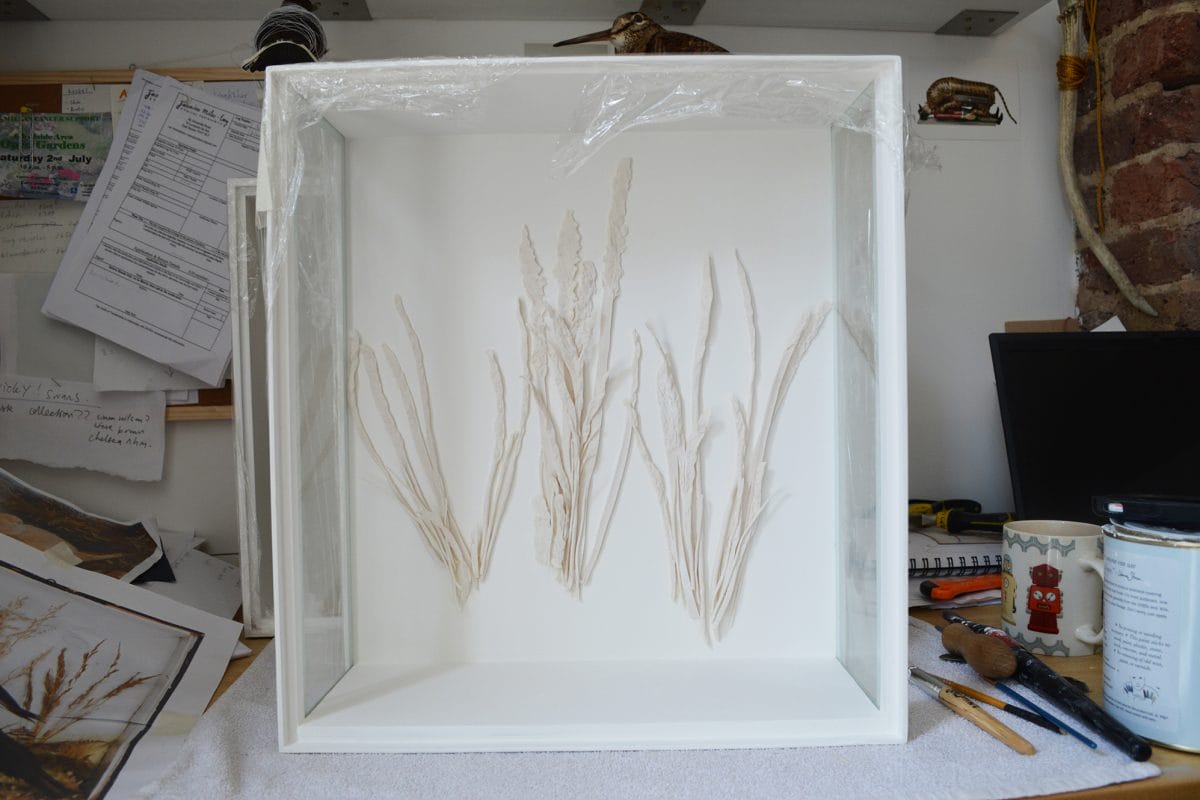
What do you want people to think when they see these artworks side by side?
I want them to be drawn into the makers behind the works and notice the taxidermy throughout the museum. Seeing the works as intricately crafted objects rather than simply preserved dead animals.
Taxidermy is such an unknown craft that I think it is often misunderstood. Through this exhibition, I hope to challenge perceptions and present the many skills taxidermists need to create work.
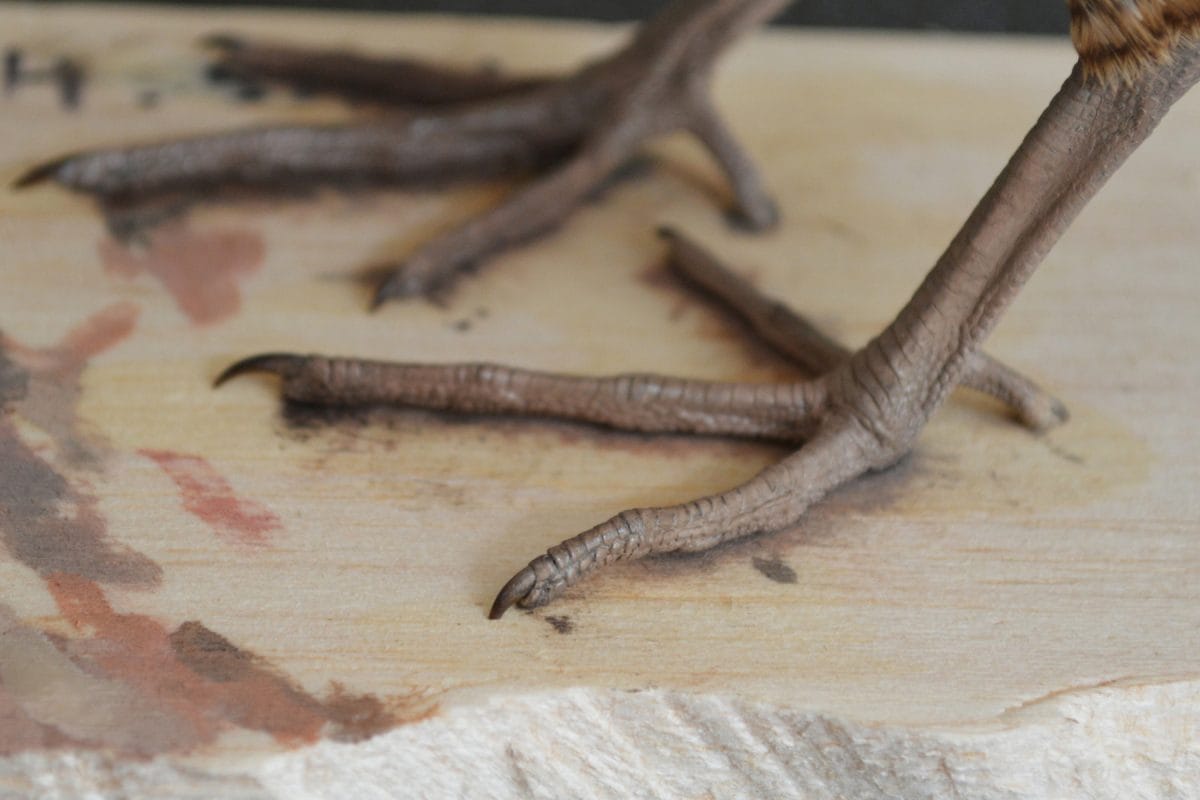
I hope to portray taxidermy as a heartfelt art form that shows compassion for the natural world and its importance as an evolving craft still used today.
I only work with animals that have died from natural causes or as the result of road casualties. And although many pieces within historical museum collections would have been hunted, it does not mean we should dismiss these objects as they are useful educational tools that speak of a different time and are part of our cultural heritage.
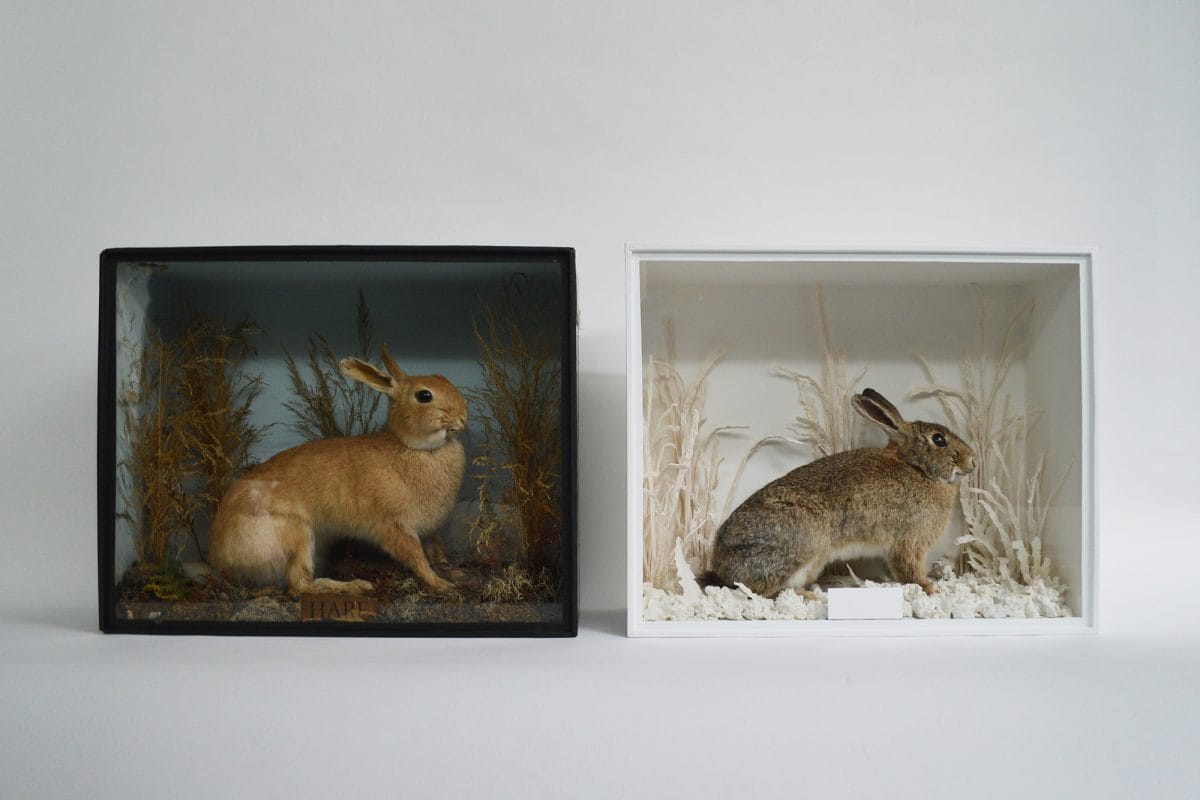
When taxidermy is donated to a museum, information such as the name of the taxidermist, the collector and time and mode of death of the animal is not always recorded. So over time, the story behind the work is often lost. This lack of information creates an air of mystery behind the work and this influenced my decision in choosing these five specimens. For instance, the magpie has obviously been lovingly made, in the groundwork of the piece even false rocks have been sculpted out of paper. But there is no information about the artefact apart from that is was presented to The Horniman in 1961. And so the story behind this magpie and its creator is most probably lost forever.
For instance, the magpie has obviously been lovingly made, in the groundwork of the piece even false rocks have been sculpted out of paper. But there is no information about the artefact apart from that is was presented to The Horniman in 1961. And so the story behind this magpie and its creator is most probably lost forever.
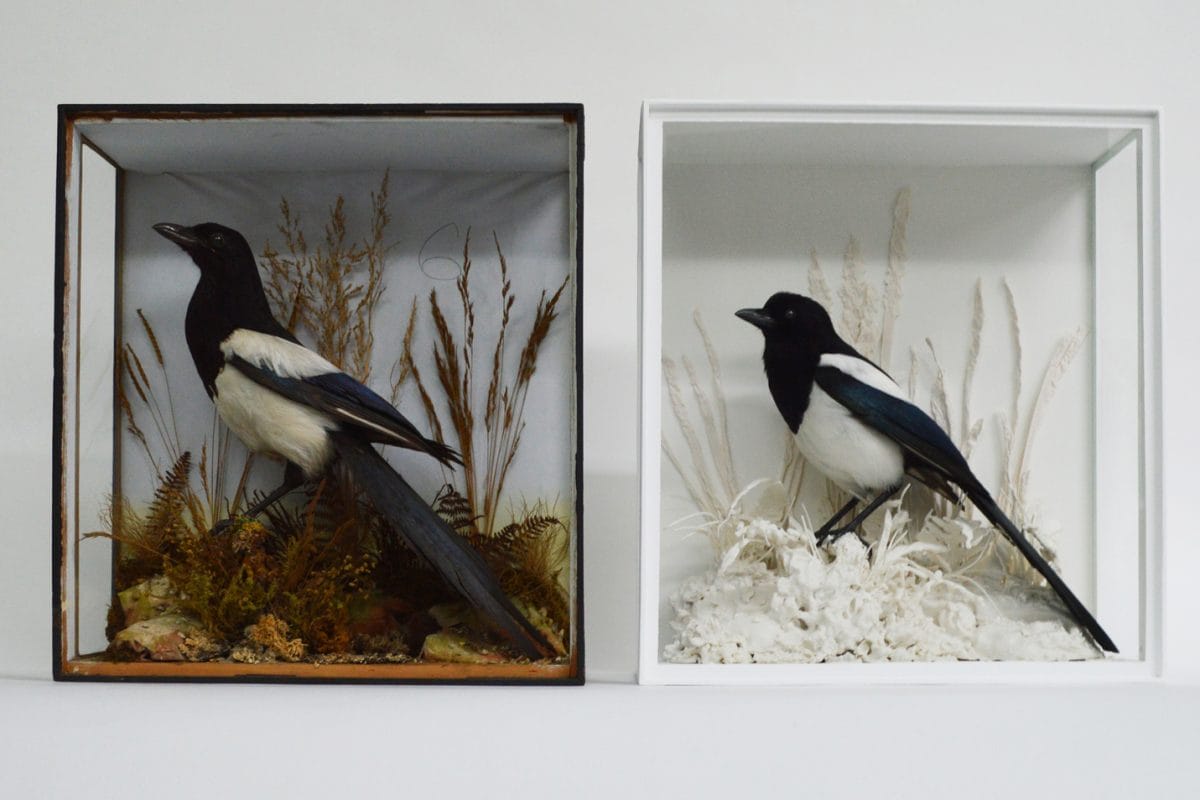
What is your favourite piece of taxidermy from our collection?
I love all of the work in the collection by Edward Hart, his ability to create such vast scenes in small cases and his attention to detail is astonishing. My favourite is probably the two European Robins in a winter scene. The case is as picturesque as a Christmas card, but it has a sinister twist. One of the robins is singing or possibly calling a warning, as the other looks inside of the brick bird trap that he is perched upon. The story within the case pulls you into a seemingly quaint scenario, either the robins know what this trap is or everything is about to go wrong.
